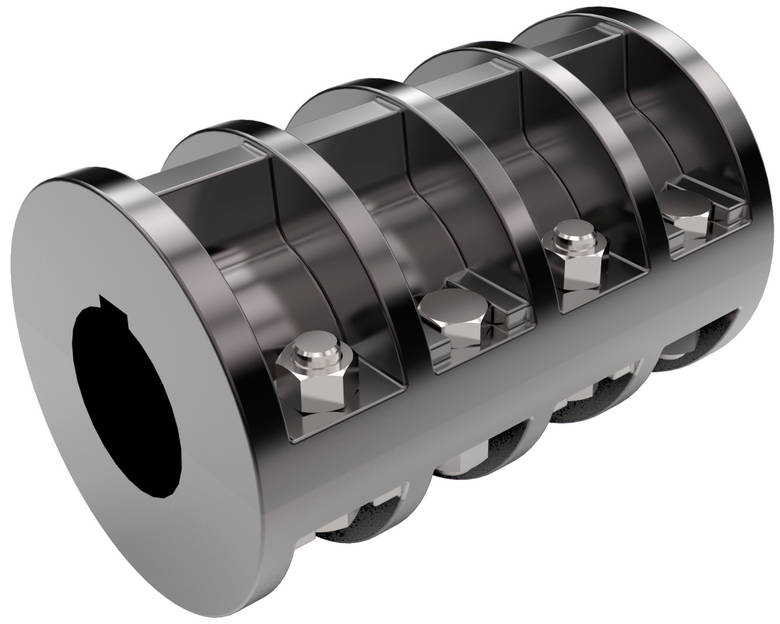“`html


Introduction to Rigid Couplings
Rigid couplings are a type of mechanical device used to connect two shafts together to transmit power in a fixed alignment. Unlike flexible couplings, they do not accommodate misalignments between the shafts but provide a precise and secure connection. This makes them ideal for applications where alignment is critical and there is little to no need for flexibility.
Key Features of Rigid Couplings
- Simplicity: With fewer parts compared to flexible couplings, rigid couplings are simpler in design and easier to install.
- High Torque Transmission: They are capable of transmitting high amounts of torque without slipping.
- Precision: Provides precise shaft alignment, crucial for many industrial applications.

Applications of Rigid Couplings
Rigid couplings are used in various applications where alignment is crucial, and there is no need for shaft flexibility. These include conveyors, gearboxes, pumps, and generators, where a precise connection ensures efficient operation and longevity of the machinery.
Advantages of Rigid Couplings
- Cost-Effectiveness: Their simple design makes them more affordable than many flexible coupling types.
- Durability: Made from robust materials, these couplings can withstand harsh conditions without degrading.
- Low Maintenance: With no moving parts, they require less maintenance compared to their flexible counterparts.
- High Precision: Ensures accurate shaft alignment, leading to increased efficiency and lifespan of connected machines.
- Easy Installation: Simplicity in design allows for quick and hassle-free installation.
Understanding the Working Principle of Rigid Couplings
Rigid couplings work by physically connecting two shafts so they rotate together as a single unit. The coupling ensures that the connected shafts have a fixed position relative to each other and do not move out of place. This is achieved by securely fastening the coupling to each shaft, often using screws or bolts, which clamps the coupling onto the shafts, preventing any relative motion between them.
The rigidity of these couplings allows for the direct transfer of torque and motion without any flexibility. This means that both shafts must be precisely aligned before installation to prevent stresses and potential damage to the machinery.
Because of their design, rigid couplings do not compensate for misalignment, end float, or vibration. Therefore, they are best suited for applications where such factors are controlled or not present.
How to Choose the Right Rigid Coupling
- Shaft Size and Type: Ensure the coupling fits the shaft diameters and types you intend to connect.
- Material Compatibility: Choose a coupling material that is compatible with the environment (corrosive, high temperature, etc.) in which it will operate.
- Torque Requirements: The coupling should be capable of handling the torque requirements of your application without failure.
- Installation Space: Consider the size of the coupling and the available space for installation.
- Alignment Capability: Ensure your machinery alignment capabilities match the precision requirement of the rigid coupling.
Maintenance of Rigid Coupling
Maintaining rigid couplings involves regular inspections to ensure they remain securely fastened and free from wear or damage. It’s crucial to check for signs of misalignment or wear, as these can lead to machinery failure. Keeping the coupling clean and addressing any issues promptly ensures the longevity and reliability of the coupling and connected machinery. The importance of maintenance cannot be overstated, as it directly impacts the efficiency and lifespan of the mechanical system.
About HZPT
HZPT, established in 2006, is a professional manufacturer and exporter engaged in the design, development, and production of couplings. With our own design and R&D team for 16 years, we offer customized product solutions globally. Our products, including a wide range of couplings like rigid couplings, are backed by a comprehensive quality inspection system from raw materials to finished goods and come with CE and TUV certificates.
Our mission is “Customer satisfaction, our pursuit.” We are committed to providing the highest product quality, exceptional services, and competitive pricing. Our main clientele in Europe and America holds us in high regard for our production capabilities and the quality of our services and products. Choosing HZPT means choosing a partner dedicated to meeting your specific needs with custom solutions and the best in market coupling options. We look forward to cooperating with you and building successful business relationships worldwide.
“`